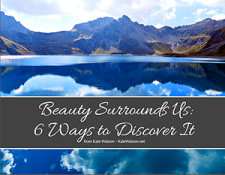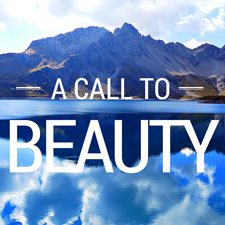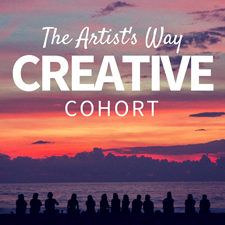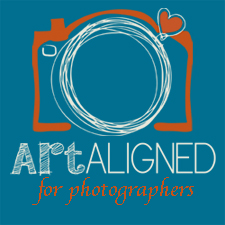 by Nima Sareh (Flickr) “The human mind can conceive of a far larger to-do list than the human body is capable of implementing.” — Brian J. Watson (aka hubby)
There, I just gave you permission (or maybe Brian did) to ruthlessly redline your own to-do list. Go ahead, tear off the bottom half and throw it out. Or copy the three most important items for today onto a new to-day list. Keep it short and sweet.
And, when you’ve completed those three assignments, celebrate! Recognize what you have done instead of what you still have to do.
My friend Cassandra pours a glass of bubbly Friday at 4pm to honor her accomplishments for the week, and you know what today is. So, why don’t you join along in Champagne Friday and acknowledge and appreciate where you are and how far you’ve come. To us!
What are you striking from your to-do list or celebrating today?
Cheers,

Hello again. It’s Tess Pierson Kefalonitis, guest blogger. Eight weeks ago, I was invited to participate in a new Art Aligned workshop, aimed at artists who want to be business people, and actually make a living at their art. The group that came together was all made up of photographers. And all of us were at different places in our careers—from just making the transition to a new career to having done it for awhile and in need of some new ways to differentiate self and business. It was a good group: well mixed, from all over the world, at all levels of expertise and a breadth of experience. I didn’t know what to expect, really, and I was willing to give it a try. I’m so very glad I did. I learned more during the eight weeks than I ever imagined.
 The business of photography. Photo inspiration by UggBoy♥UggGirl (Flickr) Kate did her homework and put together an interesting and useful curriculum. She thought of things that I hadn’t yet. And not only thought of them, but figured out how to deal with them so as to get on with business, and getting clients and increased professionalism. She covers everything from psychology to style, and she does it well.
Now I am not a new business owner. This is not my first time around that block. Yet there were things that I just wasn’t making the connection on, things she brought to my attention week after week that became breakthroughs for me both personally and professionally. Each week she brought another quite useful tool to my attention, showed us all how to use it, gave us a handout or three, set up appointments to review our progress. She was prepared, thoughtful, and she always always always made her point.
During week one, Kate (re)introduced us to the “What Are Your Strengths?” exercise. I have done this exercise at least five other times. Yawn.
And yet.
And yet it provided just the right combination of think and write it down and think again, and I made a great breakthrough that first week. Totally unexpectedly.
I remembered who I was, and it was amazing! Amazing I tell you. In fact, I hadn’t even realized I had forgotten who I was. It sounds ridiculous to me to write that down. True though. I broke through months of mental gunk and got to the heart of the matter in minutes.
Sometimes it’s not something new that we need, it’s something we already know or came into contact with, and we need to be reminded. That was the case here. And it was just the tool needed and at just the right time!
One of the things I realized, as the weeks went by, was that Kate put a lot of thought into the order of her presentation. Each tool was presented in just the right order, so each built naturally on the one from the previous week. So remembering our strengths from week one led quite naturally into week two, when Kate brought Maslow’s Hierarchy of Needs to our attention. This is something else from my long ago past, college psych classes to be precise, and still quite applicable today it turned out. Maslow discusses the fact that low level needs must be satisfied before high level needs, and if there is a conflict between the two, the higher level needs go poof. In fact, his theory rather sums up doing business the last couple of years during this recession.
Kate then added a discussion of intrinsic and extrinsic motivators, and the inherent conflict between the two. Sounds dry and (cough) boring. It ain’t. It led me to discard that old ‘seat of the pants’ business model once and for all. I now have a plan!
Next, week three brought the Inspiration Review tool. Something else I did another time in the far distant past, and thought was a waste of time. Wrong again. (Are you seeing a pattern yet? I sure was.) Getting my inspiration file together was a bit of a technical challenge: new phone, pix on old phone, wouldn’t sync up, yada yada…once I had it though, I was amazed. Again. (I am kind of getting bored with how dumb I sound. I mean when was I just going to get it? Kate has good ideas, and good reasons for those ideas. Duh. So please could you just shut up for a minute Tess, and listen and maybe get a new idea, or reminded of an old idea that works??!! Jeez Louize. This is how the voice in my head sounds sometimes.) I ended up taking pictures of old magazine tears I hadn’t looked at in years and falling in love all over again. It is simply mind blowing how happy looking at all that stuff made me. And inspired? Absolutely. Fired up is closer. Passionate. Creating. Finger itching. Dreaming of shooting stuff. Out of control.
I am still looking at it every day, and adding stuff. So happy.
The inspiration file led easily into week four, the discussion of style. Now style can be rather complicated, it turns out. Who, what, why, where, when, and, most especially, how? It turns out that how questions really help us understand style. For instance, how can I bring my vision to life through choices of my medium, composition, lighting, equipment, …? How am I going to express my vision so that other people understand what it is?
Kate then went on to break style down to two components, stated vision and motivation. We covered a lot of ground here, from how to define our unique styles to fads and trends and their place in it all, as well as introducing us to a couple of photographers new to me whose work I love. They are not in my field so I can stalk their blogs all I want! Yay me! (We were warned about blog stalking messing with our own native creativity and to be leery.)
I found the easiest way to approach style was to think about the jeans I wear and why. Color: dark wash. Cut: modern boot cut. Pockets: deep, with a watch pocket. Length: slightly drags the ground. Fabric: cotton. Brand: Calvin Klein. Love these things. I have lots and lots and lots of them. I’ve worn them for years, and I buy them several pairs at a time, just in case the company stops making them. I know I am not alone in this.
It always comes down to comfort, style, and practicality with my jeans. I need to work in them, crawl around on the floor in them, or in the sand like I did today during a beach shoot. And I need deep pockets for CF cards. Style, in my opinion, is what works for us, what we like, what we are attracted to, what we seek out again and again. Yeah, my jeans are sort of boring. I mean boot cut? It’s so two years ago. So what? I prefer to think of them as classic!
Stay tuned for part two of Tess’s experience…

Editor’s Note: This is a guest post by Yvonne Lozano.
Artists need to empower themselves and not be so much at the mercy of others. It’s a hard position to be in, because a big part about being a successful artist is having the masses approve, like, and want to buy our work, but I think sometimes artists forget (most of the time because we are rarely taught or encouraged) to pursue art as a business. There is much value in what we do and it doesn’t take our death or fame & glory to be considered a valuable, contributing member of society.
In the early stages of my studies, I always envisioned that when I finally “made it” as an artist I would just be locked away in my studio 24/7 creating masterpieces. I never really stopped to think about the reality of that dream. While I was locked in my studio, who would be doing my accounting for me, or my marketing, or networking etc.? At the time I didn’t realize that all that was up to me. Sure, I may eventually get to the point where I am lucrative enough to pay somebody else to handle the business side for me, but I didn’t realize that until I got there that I had to be the one to do it all in addition to the actual creation process.
The vision that someone will discover our art and make us famous is no different than someone waiting to win the lottery. The ratio to working, “starving” artists compared to successful artists who are “famous” is extremely unbalanced, yet we live in a culture that reaps so many benefits from “starving” artists (including revenue for local businesses, job creation, tax revenue, etc.) but gives very little thought to how to put some of this revenue into the pockets of the artists.
This cycle really arises out of ignorance on both the part of the artist and society. While there are some businesses and people who value art & the artists who create that art, what we mostly encounter are people looking to make money off of us and, in their heart, they truly believe that they are doing us a favor by offering “exposure,” when in reality we are getting ourselves into very bad business decisions and devaluing the very thing we are trying to put a value on.
Some examples include:
Donating too much work to charity auctions where the work usually gets sold for a mere fraction of its actual value, and the artist gets the short end of the stick when claiming a tax write-off because we are only allowed to deduct the value of materials as opposed to the buyer, who can deduct the entire amount paid. (!?) In addition, donating too much leads to breeding a type of collector who doesn’t purchase directly from the artist but instead waits for charity auctions to increase their private art collections.
Often, the artist who turns down giving away their art or asks for certain measures to be put in place to help preserve the value of their art is looked at as greedy or pretentious. There are so many things wrong with this picture that someone could write a book about it. It would be more reasonable for charities to have strict minimum bid requirements in place and, in addition, offer the artist at least 50% commission off the sale and, if the minimum bid is not met, then the piece does not get sold. I know many charities and fundraisers would not like this new take on artist donations because it would greatly eat into their efforts to raise money. It seems that if you wanted to raise money for a good cause, you would ask for donations from wealthy and successful members of a community, instead of going to a sector of a community who struggles to make money from their craft and are often referred to as “starving.”
Another example is business owners who ask you to display your work in their facility for free because there are many important clients (exposure) who will benefit your career. Since the business is not a gallery, there are no qualified curators or art dealers working at the business who know how to handle, protect, or sell your work. So, basically, artists are offering free decorating/interior design to the business at the risk of having our work lost or damaged, after we have already invested all of our time, expense & skill in the creating and presentation of the work with no upfront compensation whatsoever.
By putting our art in the business we have added value to the business, we most likely have helped them bring more clients through their doors, we have made their business more inviting to their current clients, and we have improved the quality of the work environment for their employees, just to name a few, but unless we sell a painting, we get no compensation. And, as we all know, even if we sell one painting, it doesn’t even begin to touch the expense, time, and energy spent to actually put the show together. In situations like this, it would seem appropriate for the business to offer the artist a stipend to help offset some of the expense of the artist in that particular show or at the very least whatever that business sells, offer you a discount, gift card, or free service as payment for your efforts.
Even showing art in galleries, getting commissioned to do art-related projects, or entering art contests requires business knowledge about contracts and copyright laws so that we get compensated fairly and don’t end up in a situation where we give away all our rights to our work.
There are always exceptions to every rule. Sometimes there are situations where a specific business has hired you several times to work on commissions and once a year they ask you to donate a piece of art to their fundraiser. To me that is a legitimate business decision. Or maybe a friend is opening a new restaurant wants to showcase your work and offers compensation in the form of free meals up to a certain dollar amount or a discount on food to patrons who buy some art.
Ignorance generally leads to oppression, and often as artists we don’t know how to be good business people. We often get taken advantage of, exploited, and devalued as a result, and that makes it harder for other artists to maintain the value and integrity of their own work in the market.
As professional artists, these are all things we need to know about, hopefully prior to getting into difficult positions so we can be informed and empowered, and not cheapen ourselves or our art. I believe that business classes should be a mandatory core requirements for any art student and that artists as a whole should not assume that everyone knows what it means to be an artist. It’s important to educate and enlighten the masses.

Guest post by: Yvonne Lozano, a Jacksonville, Florida-based fine artist who works primarily with acrylics on canvas to document her childhood memories and through large-scale murals. Her work has been seen nationally via the Progressive People’s Biennial Exhibit from 2007-2009 and is in corporate art collections, including Baptist Hospital South and Wolfson Children’s Hospital, Jacksonville. She has also been a featured artist on Fine Art America and other sites. Yvonne has a Bachelors of Fine Arts from Jacksonville University in printmaking. Visit her web site or Etsy shop for more.
 Art inspiration by Valerie Lorimer (via Etsy) A while back, I was talking to a private mentoring client about making big changes. She was unhappy with her business and knew that change was necessary, but she was feeling uncertain about her future direction. Did she want to change her business focus, close the business and take a job, go back to school, what???
I have some experience with being in that space, having put my life and business on hold last March to travel, and then finding a new path and creating Art Aligned while on the road. Here’s what I’ve learned about the process of making changes:
- Step 1: Acknowledge. Before any change can be made, you first have to acknowledge there’s a problem and that there could be another way. Once you do, it’s like…
- Step 2: Breaking free. When you make the decision to change, you feel a mix of trepidation and relief. You’re nervous about next steps but also excited about a future with more…something. More money, more happiness, more success, whatever it is you’re missing currently. Then there’s…
- Step 3: The crisis. You ask, “What the heck am I doing? I have no idea who I want to be or what I want to do, and I have no idea how I’m going to figure it out.” You may be on step three for a while. It depends on what you do to get out of it. Personally, I found that journaling, self-care, artist explorations and Julia Cameron’s Artist’s Way program helped a lot. After some soul searching, you reach…
- Step 4: The a ha! moment. You say, “Holy crap, I knew what I wanted all along.” We need our own permission to be authentic and to share our truth, and sometimes another person to hold up a mirror and help us see what we really want and need. In our day-to-day lives, we often focus on shoulds and must-dos, which can keep us trapped in old patterns and unaware of alternatives. Once we give ourselves permission, we can then begin taking baby steps toward positive change.
I believe we all know what we truly want deep down, but we may feel trapped in our current situation and unable to change. You may be a single mother with a real need to make enough money to support your family. You may be an entrepreneur who’s invested three years of your life in your current methods. You may be the successful breadwinner who feels incapable of pursuing your own dreams because of what your spouse or colleagues will say. The key to any change is baby steps. It doesn’t have to all be done at once. And, if you fall off the wagon, know that you can pick yourself up and get right back on again.
Have you made any positive changes lately? What was your experience?
Cheers,

It’s been a good, busy week. On Tuesday, I returned from California, where hubby has been interviewing for a job. He already has one offer and is expecting at least one more, so I think I can safely announce that we’re on our way back to Silicon Valley. Yay! It just feels like home there — we lived in Santa Clara before embarking on round-the-world travels in 2010 — and I love the weather, the proximity to beaches and mountains, the amenities of a big city with a suburban lifestyle. It was great to reconnect with friends, too, who we were happy to find still love us despite our having abandoned them for our travels.
Wednesday, I hosted the final group session of my second Art Aligned workshop. It’s been such a great experience to work with seven wonderful photographers, and I look forward to sharing their stories with you as they continue to evolve their artistic styles and photography businesses… There are some future superstars here, I know it!
Today, I’m giving a hat tip to one of my favorite art-business bloggers, Lisa Leonard, and sharing what I’m loving right now:
Top left: Tesla! When it comes to cars, I’m practically a guy. One of the coolest things about daily life in NorCal is seeing these babies on the road. Whiplash, every time.
Top right: Our favorite NorCal dive bar, Apple Jack’s. Always great for a cool beer after hiking in the Coast Range.
Bottom left: Beautiful beads by one of my former clients, Aja Vaz. You can see more of her work in her Etsy shop, Wandering Spirit Designs.
Bottom right: Molded heart bracelet by Lisa Leonard.
What are you loving right now?
Happy Friday,

|
![]()




















Kate Watson - Good for you, Ariane! Thanks for dropping by.
Ariane - Yayy! What a fun post! I was just reviewing my August to-do list and I struck three out of five items off. Cheers and thank you for the reminder to celebrate our accomplishments :)!